XM Indonesia telah menjadi pilihan utama bagi lebih dari 15 juta trader di seluruh dunia, termasuk ribuan trader di Indonesia. Dengan regulasi ketat, spread kompetitif, dan eksekusi order super cepat, XM menawarkan lingkungan trading yang optimal untuk trader pemula maupun berpengalaman. Artikel ini akan membahas secara lengkap tentang XM Indonesia, keunggulannya, dan cara memulai perjalanan trading Anda.
Mulai Perjalanan Trading Anda Sekarang
Bergabung dengan jutaan trader yang telah mempercayai XM Indonesia
Mengenal XM Indonesia: Broker Forex Terkemuka
XM Indonesia adalah bagian dari XM Group, broker forex dan CFD global yang telah beroperasi sejak 2009. Dengan lebih dari satu dekade pengalaman di industri trading, XM telah membuktikan diri sebagai broker terpercaya dengan menyediakan layanan berkualitas tinggi untuk trader di seluruh dunia, termasuk Indonesia.
Sejarah dan Regulasi
XM Group didirikan dengan visi menyediakan akses trading yang adil dan transparan untuk semua trader. Di Indonesia, XM beroperasi dengan mengikuti regulasi internasional yang ketat, termasuk CySEC (Cyprus Securities and Exchange Commission) dan ASIC (Australian Securities and Investments Commission).
Meskipun XM tidak memiliki regulasi langsung dari BAPPEBTI (Badan Pengawas Perdagangan Berjangka Komoditi) di Indonesia, mereka tetap mematuhi standar keamanan global yang tinggi untuk melindungi dana trader Indonesia.
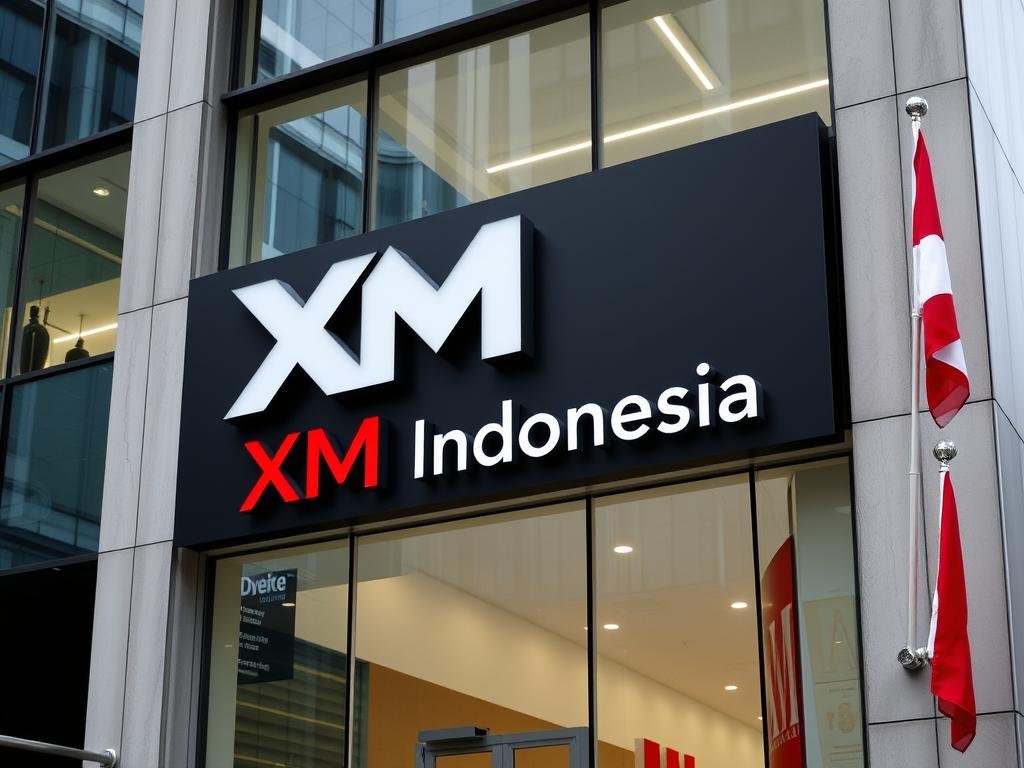
XM Indonesia telah memproses lebih dari 10,3 miliar trading yang dieksekusi tanpa penolakan atau requote, membuktikan komitmen mereka terhadap eksekusi order yang adil dan transparan.
Berdasarkan data resmi XM Group
Layanan Unggulan XM Indonesia
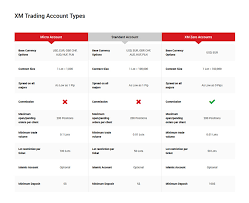
Jenis Akun Trading
XM Indonesia menawarkan beberapa jenis akun yang disesuaikan dengan kebutuhan trader:
- Akun Micro – Ideal untuk pemula dengan deposit minimal $5
- Akun Standard – Untuk trader menengah dengan kondisi trading lebih baik
- Akun XM Ultra Low – Spread super rendah untuk trader profesional
- Akun Demo – Berlatih tanpa risiko dengan dana virtual $100,000

Instrumen Trading
Akses lebih dari 1.400 instrumen trading global:
- 57 pasangan Forex (EURUSD, USDJPY, dll)
- Indeks saham global (US500, NASDAQ, dll)
- Komoditas (emas, minyak, kopi, dll)
- Saham individual dari perusahaan terkemuka
- Cryptocurrency (Bitcoin, Ethereum, dll)
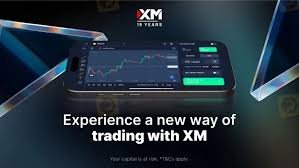
Kondisi Trading
XM Indonesia menawarkan kondisi trading kompetitif:
- Spread mulai dari 0,8 pip untuk pasangan forex utama
- Leverage hingga 1:1000 (disesuaikan dengan jenis akun)
- Eksekusi order dalam hitungan milidetik
- Tanpa requote atau penolakan order
- Perlindungan saldo negatif untuk semua akun
Kelebihan XM Indonesia Dibanding Kompetitor

Fasilitas Edukasi Komprehensif
XM Indonesia menyediakan berbagai sumber edukasi gratis untuk membantu trader meningkatkan keterampilan trading mereka:
- Webinar harian dalam bahasa Indonesia
- Video tutorial dan panduan trading
- Artikel edukasi tentang analisis teknikal dan fundamental
- Seminar tatap muka di berbagai kota di Indonesia
- Akses ke XM Research dengan analisis pasar terkini
Bonus dan Promosi Menarik
XM Indonesia dikenal dengan program bonus dan promosi yang menguntungkan trader:
- Bonus deposit 50% hingga $500 untuk akun baru
- Program Loyalty XM Points – kumpulkan poin dan tukarkan dengan kredit trading
- Kontes trading dengan hadiah menarik
- Bonus deposit ulang untuk trader setia
Penting: Semua bonus dan promosi tunduk pada syarat dan ketentuan. Pastikan untuk membaca ketentuan sebelum mengklaim bonus.

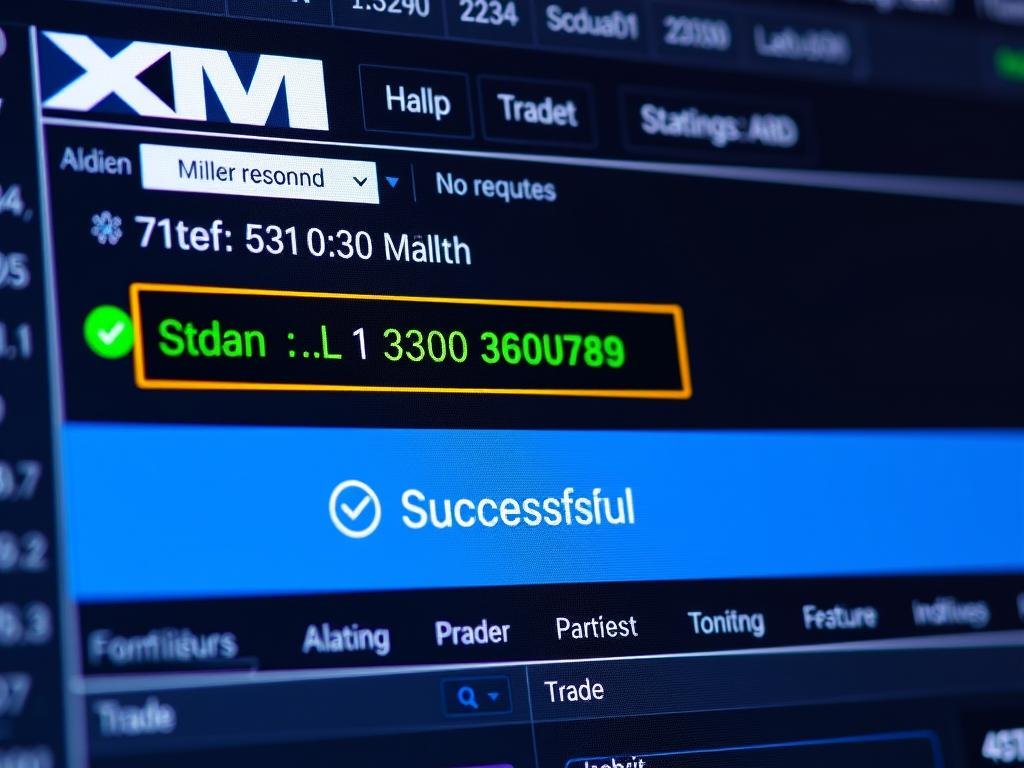
Eksekusi Order Super Cepat
Salah satu keunggulan utama XM Indonesia adalah kecepatan dan kualitas eksekusi order:
- Eksekusi dalam hitungan milidetik
- 99.35% order dieksekusi dalam kurang dari 1 detik
- Tanpa requote atau penolakan order
- Server trading yang handal dengan uptime 99.9%
- Teknologi bridge trading canggih untuk meminimalkan slippage
Rasakan Perbedaan Trading dengan XM Indonesia
Bergabunglah dengan broker yang telah dipercaya oleh jutaan trader
Panduan Registrasi Akun XM Indonesia
Membuka akun trading di XM Indonesia sangat mudah dan cepat. Ikuti langkah-langkah berikut untuk memulai perjalanan trading Anda:
- Kunjungi situs resmi XM Indonesia
- Klik tombol “Buka Akun” atau “Daftar”
- Isi formulir dengan data pribadi Anda
- Pilih jenis akun yang diinginkan
- Buat username dan password
- Setujui syarat dan ketentuan
Langkah 1: Registrasi Akun
- Unggah dokumen identitas (KTP/Paspor)
- Unggah bukti alamat (tagihan utilitas)
- Tunggu proses verifikasi (biasanya 24 jam)
- Cek email untuk konfirmasi verifikasi
- Aktifkan akun melalui link di email
Langkah 2: Verifikasi Akun
- Login ke Member Area XM
- Pilih menu “Deposit Dana”
- Pilih metode pembayaran (bank lokal, e-wallet)
- Masukkan jumlah deposit (min. $5)
- Ikuti instruksi pembayaran
- Dana akan masuk dalam 1-24 jam
Langkah 3: Deposit Dana
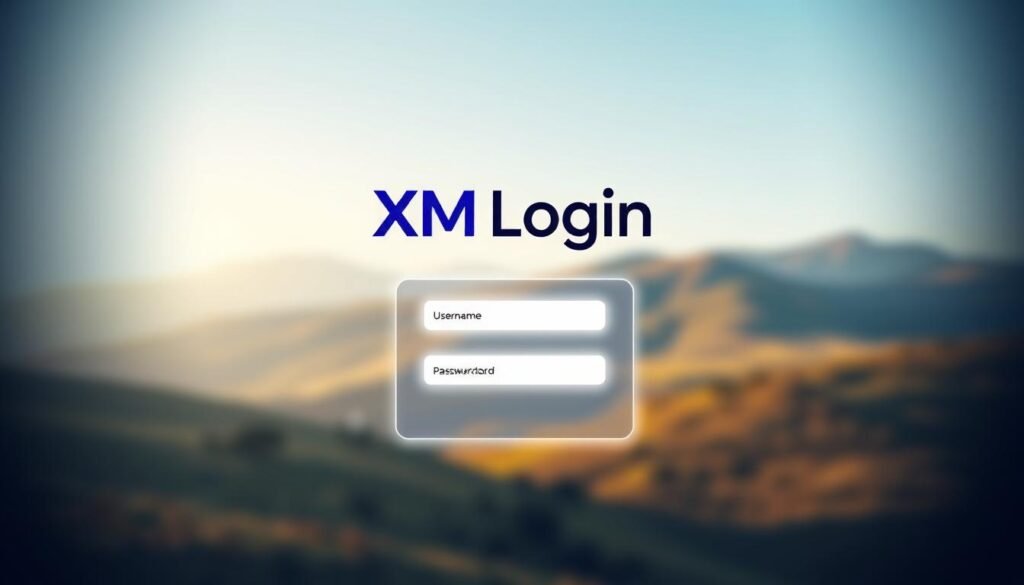
Tips Penting: Pastikan data yang Anda masukkan saat registrasi sesuai dengan dokumen identitas Anda untuk menghindari masalah saat verifikasi dan penarikan dana.
Platform Trading yang Tersedia
Setelah registrasi, Anda dapat mengakses akun trading melalui berbagai platform:
- MetaTrader 4 (MT4) – Platform klasik dengan fitur lengkap
- MetaTrader 5 (MT5) – Platform generasi baru dengan fitur tambahan
- XM WebTrader – Trading langsung dari browser tanpa instalasi
- Aplikasi Mobile MT4/MT5 – Trading dari smartphone Android dan iOS
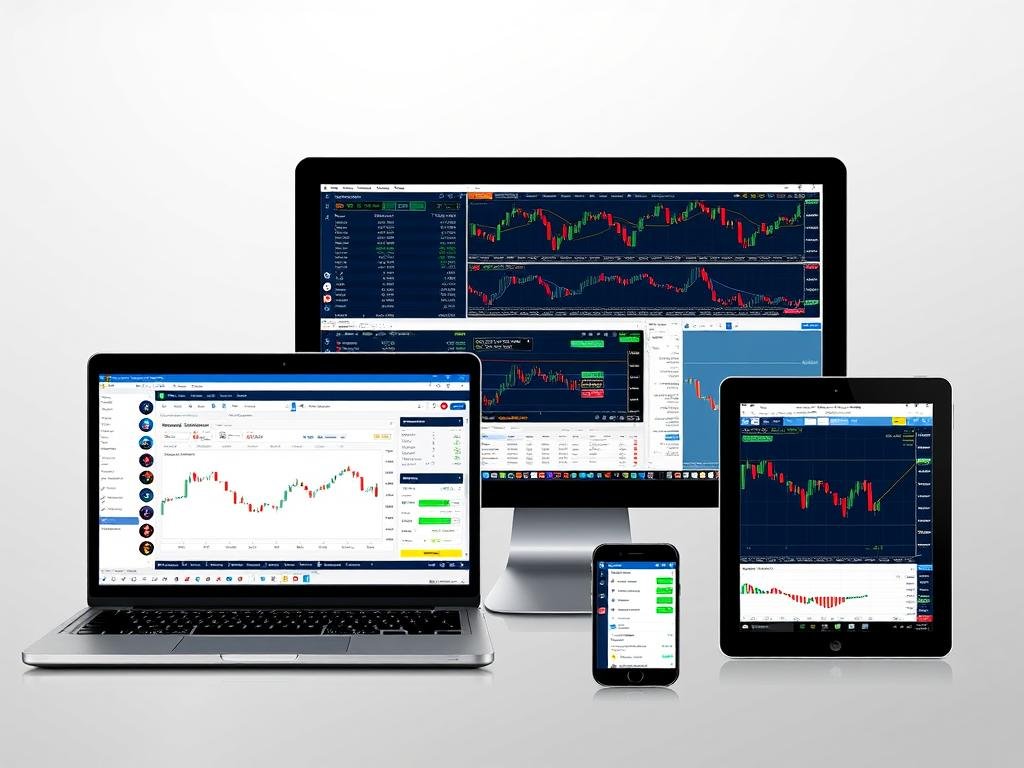
Siap Untuk Mulai Trading?
Buka akun XM Indonesia dalam hitungan menit dan dapatkan bonus deposit 50%
Tips Memilih Strategi Trading di XM Indonesia

Memilih strategi trading yang tepat sangat penting untuk kesuksesan Anda di pasar finansial. Berikut beberapa tips untuk memilih strategi trading yang sesuai di platform XM Indonesia:
Kenali Profil Risiko Anda
Setiap trader memiliki toleransi risiko yang berbeda. Tentukan profil risiko Anda sebelum memilih strategi:
- Konservatif – Fokus pada keamanan modal dengan risiko rendah
- Moderat – Keseimbangan antara risiko dan potensi keuntungan
- Agresif – Prioritas pada potensi keuntungan tinggi dengan risiko lebih besar
Strategi Berdasarkan Timeframe
- Scalping – Trading jangka sangat pendek (detik hingga menit)
- Day Trading – Buka dan tutup posisi dalam hari yang sama
- Swing Trading – Tahan posisi selama beberapa hari hingga minggu
- Position Trading – Strategi jangka panjang (minggu hingga bulan)
Strategi Berdasarkan Analisis
- Analisis Teknikal – Menggunakan chart dan indikator
- Analisis Fundamental – Berdasarkan berita ekonomi dan data
- Price Action – Trading berdasarkan pergerakan harga murni
- Strategi Hybrid – Kombinasi teknikal dan fundamental
Manajemen Risiko
- Gunakan stop loss pada setiap posisi trading
- Jangan risiko lebih dari 1-2% modal per trade
- Tetapkan rasio risk-reward minimal 1:2
- Diversifikasi instrumen trading
- Catat dan evaluasi setiap trade Anda
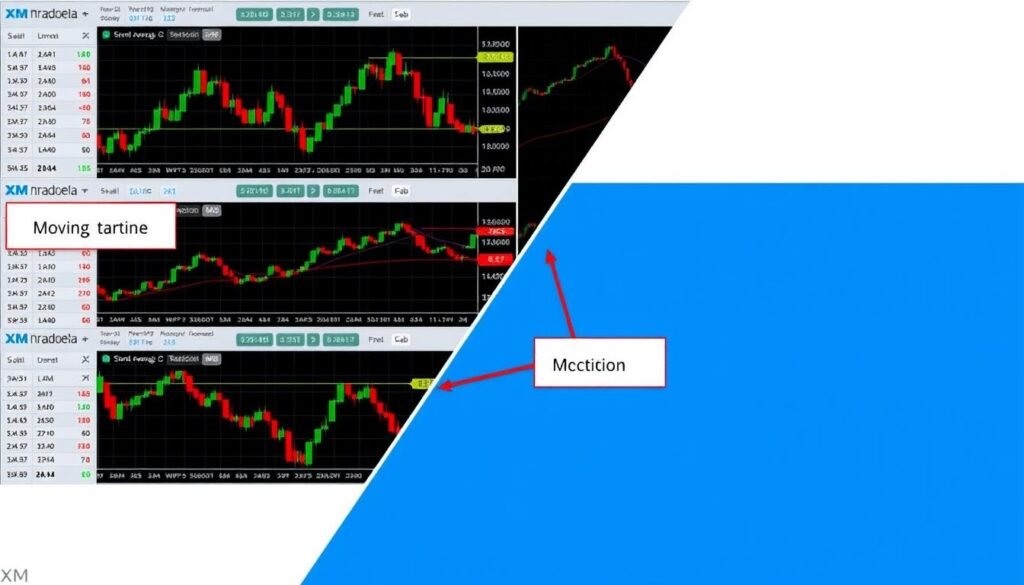
Strategi trading terbaik adalah yang sesuai dengan kepribadian, gaya hidup, dan tujuan finansial Anda. Gunakan akun demo XM untuk menguji berbagai strategi sebelum trading dengan dana riil.
Uji Strategi Trading Anda Tanpa Risiko
Buka akun demo XM dengan dana virtual $100,000
Dukungan Pelanggan XM Indonesia
XM Indonesia menyediakan layanan dukungan pelanggan 24/7 dalam bahasa Indonesia dan berbagai bahasa lainnya. Tim dukungan pelanggan XM siap membantu Anda dengan berbagai pertanyaan dan masalah terkait trading.
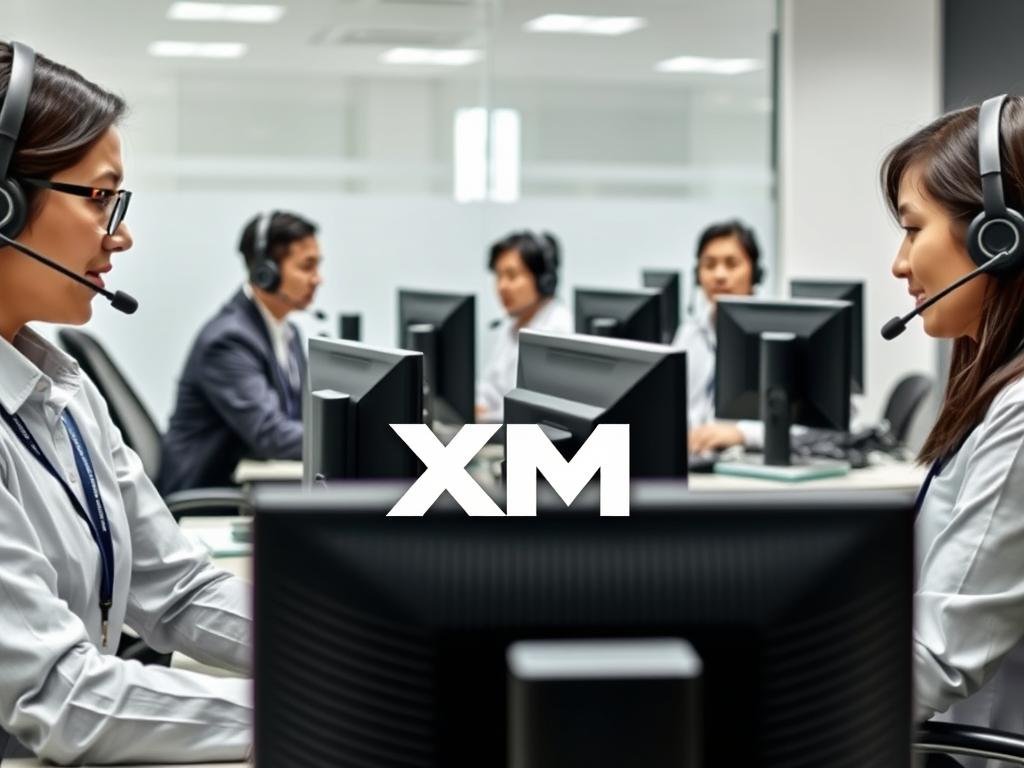
Metode Kontak
- Live Chat – Tersedia 24/7 di website XM
- Email – support@xm.com dengan respons cepat
- Telepon – Nomor lokal Indonesia tersedia
- WhatsApp – Dukungan melalui aplikasi pesan populer
- Media Sosial – Facebook, Twitter, Instagram
Berapa lama proses verifikasi akun XM Indonesia?
Proses verifikasi akun XM Indonesia biasanya memakan waktu 24-48 jam kerja setelah semua dokumen yang diperlukan diunggah. Dalam beberapa kasus, verifikasi dapat selesai dalam hitungan jam.
Apa saja metode deposit dan penarikan yang tersedia untuk trader Indonesia?
XM Indonesia menyediakan berbagai metode deposit dan penarikan yang populer di Indonesia, termasuk transfer bank lokal (BCA, Mandiri, BNI, BRI), e-wallet (DANA, OVO, GoPay), dan kartu kredit/debit. Semua penarikan diproses tanpa biaya dari pihak XM.
Apakah XM Indonesia memiliki regulasi resmi?
XM Group diregulasi oleh otoritas keuangan internasional seperti CySEC (Cyprus) dan ASIC (Australia). Meskipun tidak memiliki regulasi langsung dari BAPPEBTI Indonesia, XM tetap mematuhi standar keamanan global yang ketat untuk melindungi dana trader Indonesia.
Mulai Trading dengan XM Indonesia Sekarang
XM Indonesia menawarkan lingkungan trading yang optimal dengan spread rendah, eksekusi super cepat, dan dukungan pelanggan 24/7. Dengan berbagai jenis akun yang disesuaikan untuk semua level trader, platform trading canggih, dan sumber edukasi komprehensif, XM Indonesia adalah pilihan tepat untuk memulai atau melanjutkan perjalanan trading Anda.

Kelebihan XM Indonesia
- Spread rendah mulai dari 0,8 pip
- Eksekusi order super cepat tanpa requote
- Bonus deposit hingga 50%
- Edukasi komprehensif dalam bahasa Indonesia
- Dukungan pelanggan 24/7
- Perlindungan saldo negatif
- Platform MT4/MT5 yang stabil
Hal yang Perlu Diperhatikan
- Tidak memiliki regulasi langsung dari BAPPEBTI
- Beberapa bonus memiliki persyaratan trading
- Metode deposit lokal terkadang membutuhkan waktu lebih lama
- Leverage tinggi (1:1000) berisiko untuk trader pemula
Bergabung dengan 15 Juta Trader yang Mempercayai XM
Buka akun gratis dan mulai trading dalam hitungan menit